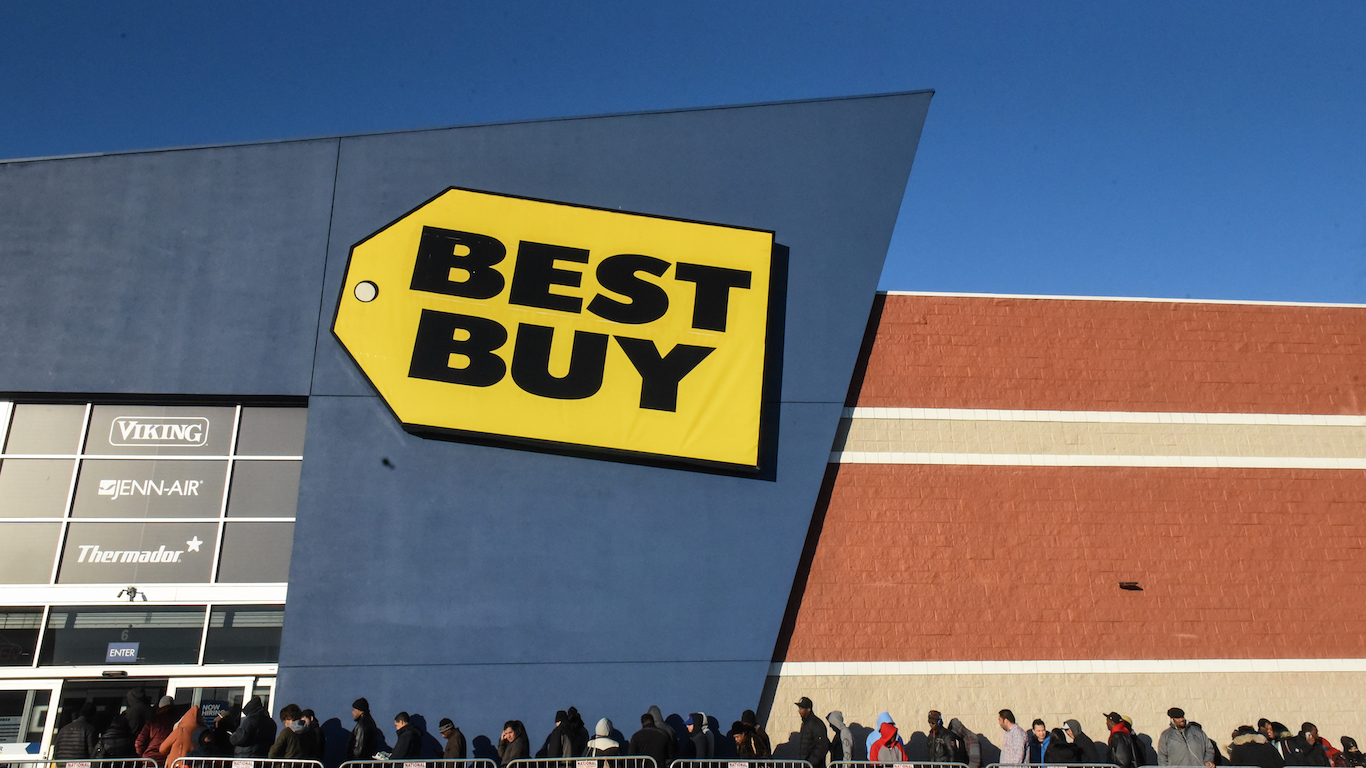When economists, investors and business people want to decide what the next three to 12 months look like, they have to choose from myriad sources to decide what the overall climate is like. They cannot rely on global GDP reports or unemployment reports, as those are lagging indicators that only look backwards. They have to look to leading indicators, or they have to look at what the companies with boots on the ground in industries that lead the economy are saying.
24/7 Wall St. decided to look at several companies that might be used as barometers of leading indicators. This is not just for investors. It also can be for business people and economists who have to forecast what they should be doing months ahead of what the backward-looking economic reports of the week and months past are saying.
The aim is to pick the companies that will start to see orders pick up months before the real economic recovery can be felt — or that drop off even as backward-looking economic reports are strong. Copper and other basic materials are of course leading indicators, but the daily price fluctuations and news from China or elsewhere often creates too much noise for them to be useful.
Leading indicator companies are involved in aspects of industry, wholesale, transportation and more. Generally speaking, the bread and butter of their business operations are very high up the food chain and are not stores that Joe Public would shop in. Their businesses start to pick up or taper off generally months ahead of the consumer and retail cycles.
Note that not all of these are meant to be incredible stock performers. Most have dividends, but their performance against the market is mixed. When these companies announce trend reversals or stabilization in their conference calls and analyst meetings, it should mean much more for the broad economy and the stock market as a leading indicator, rather than how their quarterly numbers stack up against company analyst reports just about their own company.
Airgas Inc. (NYSE: ARG) is one of the top suppliers of industrial gases, as well as gases for medical use and specialty uses. It also has hardgoods for welding equipment and related products. The company has limited competition and slow steady sales growth. For companies to do much of anything to build up the economy several months out, chances are high that Airgas has a shot at being able to see an order from them.
- Market capitalization: $7.88 billion.
- Stock price change since March 6, 2009: 330%. Change year-to-date: -4.2.
- Revenue. 2011: $4.25 billion; 2012: $4.75 billion (up 11.7%); 2013: $4.96 billion (up 4.6%). 2014 consensus estimate: $5.1 billion, up 2.8%.
- Wednesday close: $106.58; 52-week range: $92.86 to $113.16. Analysts’ price target: $112.36
- Dividend yield: 1.8%
Expeditors International of Washington Inc. (NASDAQ: EXPD). Expeditors International is a leading indicator in logistics, mainly air and ocean freight consolidation and forwarding. It acts in all aspects of international trade logistics, generally as the agent or broker, and related services. Its customers range from electronics distribution, retail chains and apparel wholesalers to auto, industrial and other manufacturing. In short, its gets a bird’s-eye view of when global order flow starts to taper off, stabilize or pick up. The catch: its own stock is not very exciting nor very volatile. Its stock also peaked last October and started to sell off ahead of the last wave of market and economic volatility.
- Market capitalization: $7.84 billion.
- Stock price change since March 9, 2009 (low): 71%. Change year-to-date: -12.5%.
- Revenue. 2011: $6.16 billion; 2012: $5.99 billion; 2013: $6.08 billion. 2014 consensus estimate: $6.48 billion, up 6.6%.
- Wednesday close: $38.68; 52-week range: $34.83 to $46.90. Analysts’ price target: $46.60
- Dividend yield: 1.5%
Fastenal Co. (NASDAQ: FAST). Fastenal is front-and-center of the economy, making and selling thousands of fasteners and industrial products. Sales in 2012 and 2013 seemed to stagnate. February 2014 sales were up 7.7% from a year ago as weather problems eased. The company does have retail exposure, but the company often has a clear picture of what is coming months ahead on the wholesale level for the purposes of acting as a leading indicator. Wunderlich Securities analyst Brent Rakers sees 14% to 15% sales growth in May.
- Market capitalization: $14.44 billion.
- Stock price change since March 6, 2009: 84.4%. Change year-to-date: 2.4%.
- Revenue. 2011: $2.77 billion (up 22% year over year); 2012: $3.13 billion (up 13%); 2013: $3.33 billion (up 6.4%). 2014 consensus estimate: $3.68 billion (up 10.5%).
- Wednesday close: $48.64; 52-week range: $42.58 to $53.12. Analysts’ price target: $50.71.
- Dividend yield: 2.0%
Steelcase Inc. (NYSE: SCS). The office-furniture maker beat Street estimates for the fiscal-fourth quarter and guided higher for the first quarter, implying as a leading indicator that maybe things aren’t so bad. That caused a pop in its own stock recently. Contract purchasing should grow modestly, but that is an acceleration over 2013, the company says. European markets are starting to show life again. First-quarter revenue should rise 7% to 11%. The overall backlog at the end of the 2014 fiscal year was up 18% from a year earlier.
- Market capitalization: $2.02 billion.
- Stock price change since March 6, 2009: 318.5%. Change year-to-date: 2.7%.
- Revenue. 2011: $2.44 billion (up 6.6% year over year); 2012: $2.75 billion (up 12.7%); 2013: $2.87 billion (up 4.4%). 2014 consensus estimate: $3.09 billion, up 7.7%.
- Wednesday close: $16.28, up $1.70, or 11.7%. 52-week range: $12.16 to $16.95. Analysts’ price target: $19.
- Dividend yield: 2.7%
United Rentals Inc. (NYSE: URI). The company is the biggest renter of tools and equipment. It is one of the biggest buyers of products from Caterpillar. The company has said its order book is filling up for the spring construction season, and it sees stronger growth in 2015 and 2016. It recently agreed to buy National Pump, which provides specialty pumps to the energy industry, for $780 million.
- Market capitalization: $8.55 billion.
- Stock price change since March 6, 2009: 2,801.3%. Change year-to-date: 17.6%.
- Revenue. 2011: $2.61 billion (up 10.6% year over year); 2012: $4.12 billion (up 57.9%); 2013: $4.96 billion (up 20.4%). 2014 consensus estimate: $5.45 billion, up 9.9%.
- Wednesday close: $91.68, down $1.45, or 1.6%. 52-week range: $44.85 to $96.51. Analysts’ price target: $98.94
- Dividend yield: N/A
It’s Your Money, Your Future—Own It (sponsor)
Retirement can be daunting, but it doesn’t need to be.
Imagine having an expert in your corner to help you with your financial goals. Someone to help you determine if you’re ahead, behind, or right on track. With SmartAsset, that’s not just a dream—it’s reality. This free tool connects you with pre-screened financial advisors who work in your best interests. It’s quick, it’s easy, so take the leap today and start planning smarter!
Don’t waste another minute; get started right here and help your retirement dreams become a retirement reality.
Thank you for reading! Have some feedback for us?
Contact the 24/7 Wall St. editorial team.




